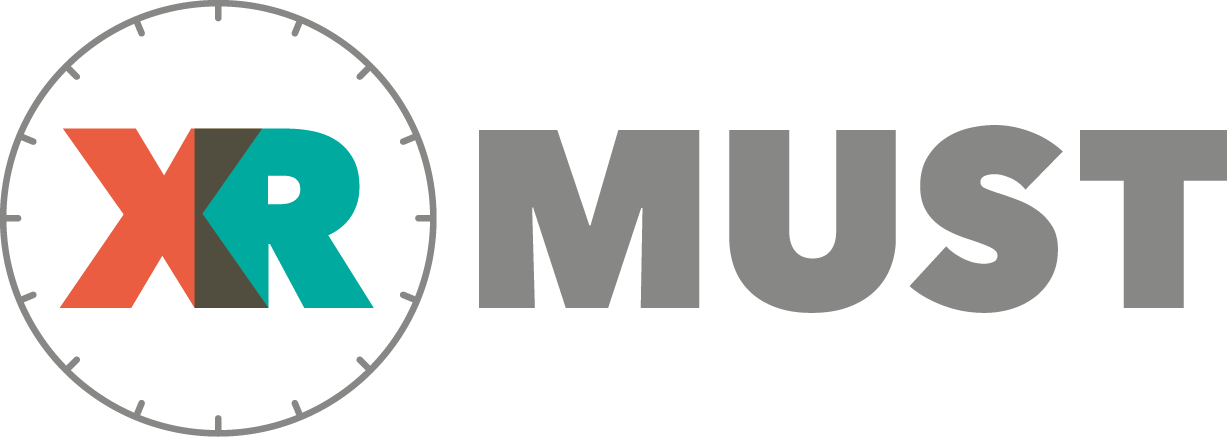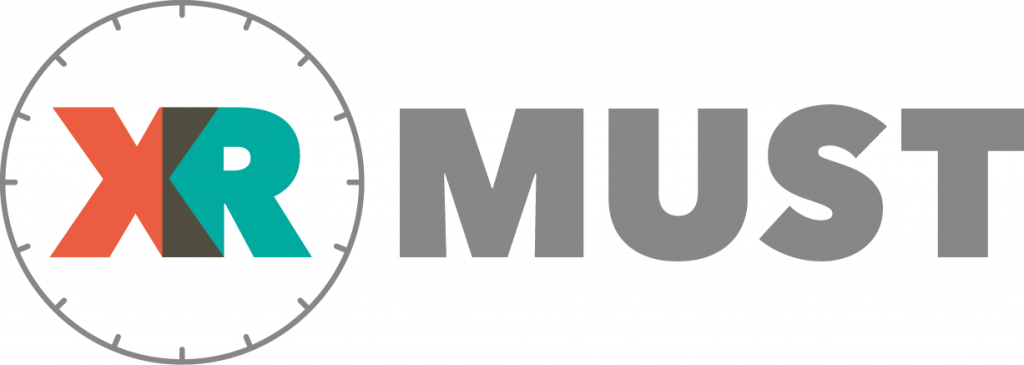I encountered Nancy Baker Cahill’s work through a seminar at CalArts, where she shared her expansive approach to AR sculpture, expanded cinema and analog relationships with land. What struck me was not just the scale of her projects but her methodology on creating a recursive cycle where landscapes and bodies exist fluidly between tactile and virtual realms—integrating art, politics, and sensory experience.
Rather than just thinking about her work as existing between the physical and virtual, I want to start with how it makes us tune into things we don’t always notice—hidden systems, frequencies, and the way we communicate.
How do we think expanding our awareness of dialogues—whether through frequencies, language, or digital systems—can reshape the way we perceive agency, power, and our connection to the more-than-human world? Naturally, I was eager to continue the conversation, driven by our shared curiosity—whether through books, ideas, or artistic processes.
Cover: Nancy Baker Cahill‘s Immersive Visual Narrative Project SEEK Created Exclusively to be Experienced in Cosm Venues

Nancy’s engagement with immersive storytelling, ecological awareness, and collective participation makes her practice both timely and urgent. In this conversation, we explore:
- Eco-friendly artistic approaches and interdependence in nature
- Alternative perceptions of the body through sculpture and projection mapping
- The decentralized embodiment (e.g. Corpus)
- The social-political layers of technology-driven art (e.g. Body Politic)
- Reimagining Expanded Cinema in emotional and narrative experiences
- The collective experience of AR & 3D painting
Interdependence & The Art of Listening
Zelia: Your seminar resonated deeply with me, especially the way you approach ecological interdependence. I see that interdependence deepens interconnectedness through mutual reliance and evolution. I recently started reading The Light Eaters, which you mentioned, and I find its discussion on symbiotic networks and how plants “listen” to each other incredibly inspiring. How did this influence your work?
Nancy: I love that you’re reading it! Yes, it’s fascinating how plants hold memory, even though they’re not “thinking” in the way we do. My work often explores this expanded perception—how we can sense and listen beyond human limits. Sound is particularly interesting to me. I don’t compose sound, but I work with sound artists, and I’m fascinated by how frequencies exist across species.
Zelia: That connects to my recent research on agave plants in the desert, where water becomes their survival network. They “talk” to each other through environmental changes, yet we often can’t hear it. It makes me wonder—how do we translate these invisible conversations into artistic experience?
Nancy: That’s exactly the kind of question that drives my work. I often think about how we can create sensory experiences that invite participation, not just observation. It’s about finding ways to collapse distinctions—between human and non-human, digital and physical, seeing and sensing.

AR as a Collective Language
Zelia: Your AR projects, like CENTO, are built on collective storytelling. Unlike traditional digital art, they invite public engagement—not just as spectators but as co-creators. What led you to this approach?

Nancy: It started when I realized VR, while immersive, can be deeply isolating. I wanted to create something that could be shared without the barriers of headsets or expensive setups. That’s how AR became a key part of my practice.
With CENTO, I wanted to blur the role of the artist and audience. Users add feathers to the creature’s evolving body, making it a truly co-built entity. It becomes something neither fully mine nor fully theirs—a living archive of participation.

Zelia: That reminds me of SUBSTRATE at Los Angeles County Museum of Art, your systems-based project that began by identifying three civic institutions as cultural “mother trees.” Inviting students to curate an exhibition from LACMA’s public collection based on their own interests and themes resonant for their own communities represents an approach that decentralizes authorship and makes participation part of the artwork itself. Your AR iteration of this project, opening soon, will allow the general public to participate and co-build a new network of culturally protected contributions collectively.
Nancy: Exactly. I’m interested in democratizing access to creative agency, making art a process rather than a product. I think of it as part of the lineage of social sculpture.
The Body in Digital & Analog Spaces
Zelia: In your work, I notice a constant dialogue between the body and architecture, digital and analog materials. Your SLIPSTREAM sculptures, for example, started as graphite drawings but transformed into three-dimensional organic forms. How do you navigate these transitions?
Nancy: It all started when I began working in VR. I realized that drawing in 3D space changed how I saw everything—even when I went back to paper. I wasn’t marking a 2D surface anymore; I was extracting forms from space.

With SLIPSTREAM, I took those drawings, tore them apart, rebuilt them as physical sculptures, and then translated them back into digital models. This cyclical transformation questions the boundaries of materiality—what is “real” when something exists across multiple states?


Zelia: That’s what fascinates me—the idea that these works are not fixed objects but processes in motion. It reminds me of your CORPUS project, where the body is not a singular entity but a fluid form.
Nancy: Exactly. CORPUS was an experiment in decentralized embodiment, challenging the idea that the body has a fixed center. It exists between organic material, machine learning, and speculative forms. The goal was to make something that feels alive—not in a human way, but as a continuously evolving entity.
Technology & Activism in Public Space
Zelia: Your work often intersects with social-political themes, like BODY POLITIC, which was censored when displayed in West Hollywood. How do you see the role of technology-driven art in activism?
Nancy: That experience was eye-opening. The project was about reproductive rights and bodily autonomy, and it was censored by a corporate billboard owner who objected to the content. It was ironic—because the work itself was about erasure and control over the body.
For me, activism in art isn’t about preaching; it’s about making power structures visible. Whether it’s through AR, projection mapping, or expanded cinema, I want to create spaces where people can engage, question, and push back.
Expanded Cinema: Reimagining Perception
Zelia: Speaking of Expanded Cinema, your project SEEK at Cosm plays with perception in a massive LED dome. What excites you about immersive formats like this?
Nancy: I see Expanded Cinema as an opportunity to create layered realities—where sound, movement, and image morph into a sensory moment. With SEEK, I wanted to break away from passive screen-based experiences and make something that feels alive.
Zelia: Does it connect to your interest in sensory dissonance—the idea that our perception is always shifting?
Nancy: Absolutely. We are constantly navigating multiple realities at once—our digital lives, physical presence, memory, and future anxieties. Expanded Cinema lets us play with that simultaneity, inviting deep attention to the present moment.

The Future of Immersion
Zelia: This conversation has really opened up so many ideas—from eco-conscious storytelling to redefining embodiment in digital spaces. If there’s one thing you hope people take away from your work, what would it be?
Nancy: I hope my work reminds people that nothing is fixed—not identity, not perception, not the systems we’re conditioned to accept. If we recognize that, we can imagine better, and hopefully more equitable futures.
Zelia: That’s beautifully said. Thank you so much for this conversation! I’d love to collaborate in the future.
Nancy: Absolutely! Let’s keep in touch.
Takeaways from the Conversation
- Ecological & Technological Sensibilities: Digital tools can be used consciously, acknowledging their political and ethical dimensions.
- The Body as Process, Not Object: Sculptures, projection mapping, and digital forms can all be fluid, living entities.
- Activism Through Visibility: Power structures can be revealed, questioned, and interrupted through public art and immersive experiences.
- Challenge The Permanence Of Form: One of her methods is material-driven, e.g. Slipstream, where graphite marks become immersive sculptures, then digitized, animated, and reintroduced into physical installations. Her work offers an ever-shifting interplay between human perception, ecological memory, and technological transformation.
- Art as Collective Creation: AR and Expanded Computational practice, making works co-authored and evolving, exploring the concept of interdependence.



Leave a Reply
You must be logged in to post a comment.